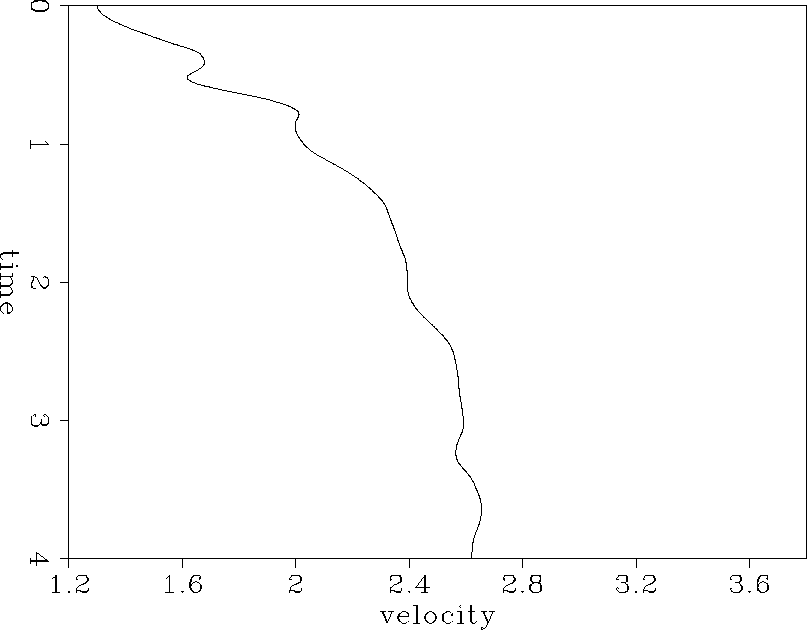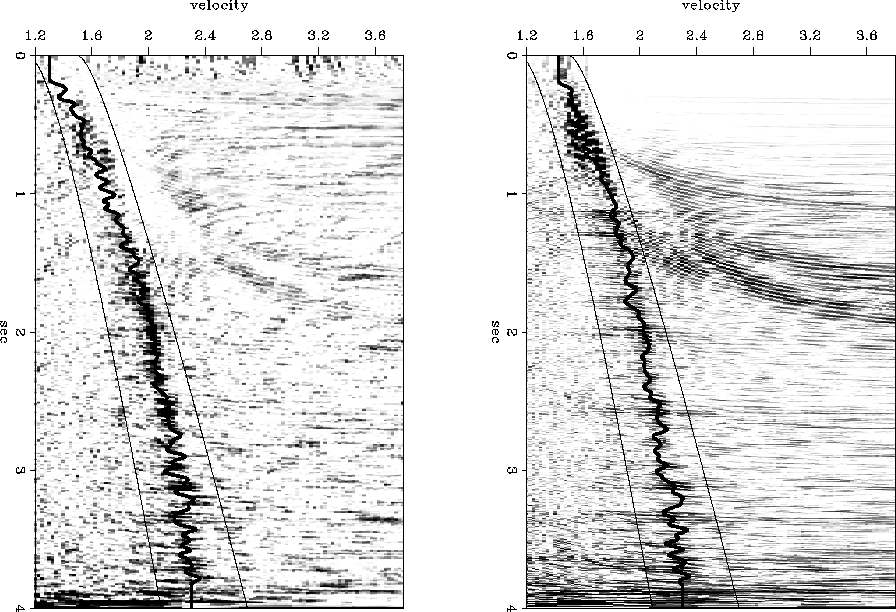




Next: Block Models
Up: Velocity estimation: Clapp, et
Previous: BASIC IDEA
As a simple example of the methodology, we started from a single CMP
gather (Figure data).
We then scanned over velocities calculating semblance
and instantaneous stack energy (Figure rms-picks).
We started with an initial RMS velocity function  by picking the maximum semblance
within a fairway. We used the corresponding instantaneous stack energy
for our weighting function,
by picking the maximum semblance
within a fairway. We used the corresponding instantaneous stack energy
for our weighting function,  .
.
data
Figure 1 Input CMP gather from the Gulf
of Mexico.
|
|  |




 rms-picks
rms-picks
Figure 2 Two different approaches to picking starting RMS and weighting functions. Both start by scanning over velocity and
then picking maximum amplitude within a fairway. To avoid edge problems
early and late time velocities are pre-determined.
The left frame shows a semblance scan and the resulting RMS function;
the right panel, same information for instantaneous stack energy





We applied fitting goals (7) and (8) to the picked
RMS function and obtained Figure ![[*]](http://sepwww.stanford.edu/latex2html/cross_ref_motif.gif) a smooth,
reasonable velocity function.
a smooth,
reasonable velocity function.
scale-residuals
Figure 3 Estimated interval
velocity obtained from fitting goals (7) and (8).
|
|  |










Next: Block Models
Up: Velocity estimation: Clapp, et
Previous: BASIC IDEA
Stanford Exploration Project
7/6/1998



![[*]](http://sepwww.stanford.edu/latex2html/cross_ref_motif.gif) a smooth,
reasonable velocity function.
a smooth,
reasonable velocity function.
